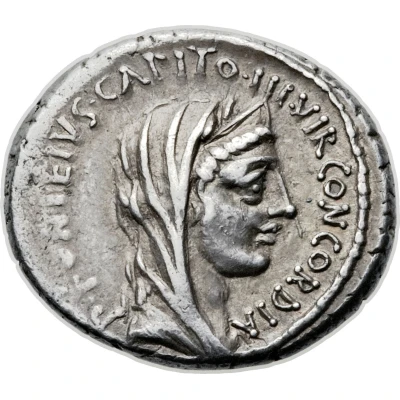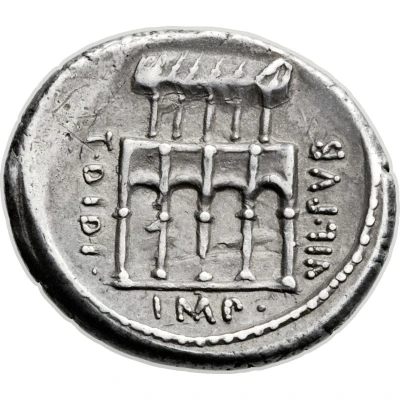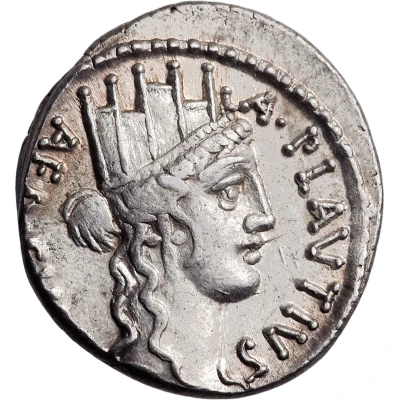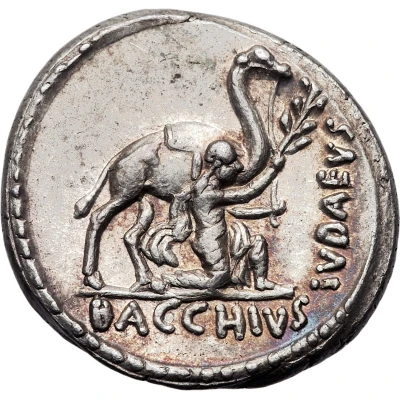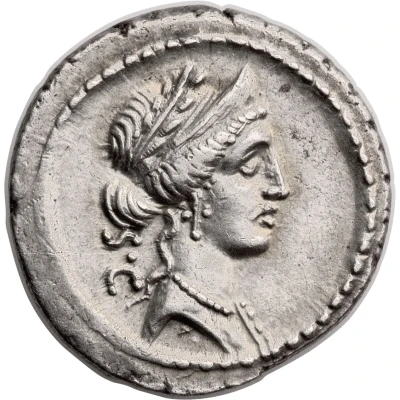
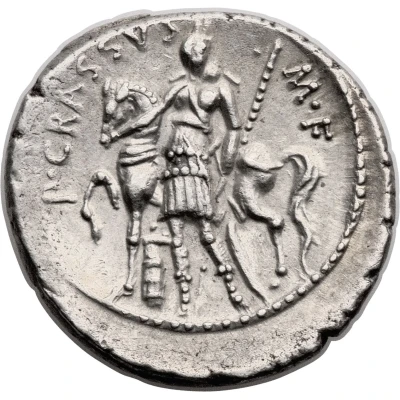

© Heritage Auctions
Denarius Licinia: Publius Licinius Crassus; S•C / P•CRASSVS•M•F 55 BC
55 BC year| Silver | 3.9 g | 20 mm |
| Issuer | Rome › Roman Republic (509 BC - 27 BC) |
|---|---|
| Period | Republic (509 BC - 27 BC) |
| Type | Standard circulation coin |
| Year | 55 BC |
| Value | Denarius (1) |
| Currency | Denarius of 16 Asses (141 – 27 BC) |
| Composition | Silver |
| Weight | 3.9 g |
| Diameter | 20 mm |
| Shape | Round (irregular) |
| Technique | Hammered |
| Orientation | Variable alignment ↺ |
| Demonetized | Yes |
| Updated | 2024-10-06 |
| Numista | N#66863 |
|---|---|
| Rarity index | 100% |
Reverse
Female figure standing facing with head left, leading horse left by bridle with right hand and holding spear in left hand; at feet, cuirass and shield; around, inscription.
Border of dots.
Script: Latin
Lettering: P•CRASSVS•M•F
Unabridged legend: Publius Crassus Marcus Filius
Translation: Publius [Licinius] Crassus, son of Marcus
Edge
Plain
Comment
The gens Licinia was a celebrated plebeian family at Rome, which appears from the earliest days of the Republic until imperial times, and which eventually obtained the imperial dignity. The first of the gens to obtain the consulship was Gaius Licinius Calvus Stolo, who, as tribune of the plebs from 376 to 367 BC, prevented the election of any of the annual magistrates, until the patricians acquiesced to the passage of the lex Licinia Sextia. This law, named for Licinius and his colleague, Lucius Sextius, opened the consulship for the first time to the plebeians. Licinius himself was subsequently elected consul in 364 and 361 BC, and from this time, the Licinii became one of the most illustrious gentes in the Republic.Interesting fact
One interesting fact about this coin is that it features a portrait of Publius Licinius Crassus, a prominent Roman politician and military leader, on the obverse (front side), while the reverse (back side) depicts the goddess Venus standing on a rock, surrounded by a wreath of oak leaves. This design was meant to symbolize the power and prosperity of the Roman Republic during the late Republic period.
